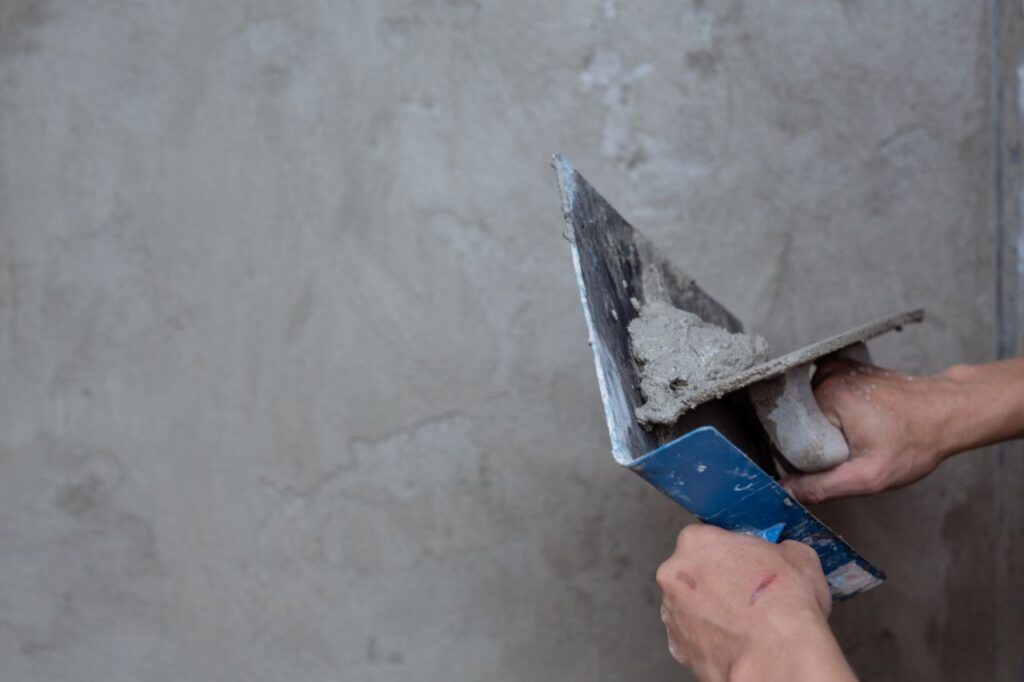Residential plastering is a key home improvement solution that enhances the appearance, durability, and overall value of your property. From providing a sleek finish to your walls to improving insulation, plastering services are a great way to increase both the aesthetic appeal and functionality of your home.
Whether you’re renovating for style, improving energy efficiency, or increasing your home’s resale value, plaster wall installation is a reliable and cost-effective choice. This guide will explore the many advantages of residential plastering and why it’s a smart investment for your home.
Let’s Get Straight To The Point
What Are the Benefits of Residential Plastering?
Residential plastering offers a wide range of benefits, from enhancing aesthetics to improving the comfort and safety of your home. Plastering for home renovation provides both practical advantages, such as insulation and durability, and aesthetic benefits, like smooth finishes and custom design features.
Whether you opt for acoustic plastering for noise reduction or fireproof plastering for enhanced safety, plastering is a versatile and effective solution for any home.
Residential Plastering Improve Aesthetics and Design Flexibility
One of the most significant advantages of residential plastering is its ability to elevate the look of your home. Plaster wall installation can give your walls and ceilings a refined, smooth finish that works with any interior style, whether traditional or contemporary.
The wide variety of textures, styles, and finishes available allows for the creation of unique designs that align with your vision.
Stylisation and Aesthetic Appeal
Plaster provides a superior finish to walls and ceilings, which enhances the overall aesthetic appeal of your home. Whether you prefer a minimalist style or intricate decorative touches, plaster allows for flexibility.
For example, plaster moulding can be used to create elegant cornices, archways, or ceiling panels that elevate the visual impact of a room.
Varied Design Options
If you’re looking for plaster design ideas, plaster can be used to achieve both classic and modern effects. Choose lime plaster for a natural look, gypsum plaster for a smooth finish, or cement plaster for a more robust option.
Plaster is versatile enough to be applied in various textures and patterns, creating features like columns, domes, and decorative ceiling designs. Whether restoring heritage features or updating a modern space, plastering offers endless design possibilities.
Plastering Is Durable and Long-Lasting
Durability is a crucial consideration when selecting materials for your home. Durable plaster is an excellent choice for wall and ceiling finishes due to its ability to withstand wear and tear. Plaster wall repair is rarely needed compared to other finishes, making plaster a long-lasting option that provides value over time.
Long-Lasting Strength
Plastered walls are more resistant to damage than other materials, such as drywall. Gypsum plaster, cement plaster, and acrylic plaster all provide strength and stability. They are less likely to dent or scratch, making them an ideal choice for homes with active households. When correctly installed, plaster can last for decades, ensuring your investment pays off in the long term.
Fire and Water Resistance
Plaster offers excellent protection against fire and moisture. Fireproof plastering is ideal for areas prone to high temperatures, such as kitchens and around fireplaces. Its ability to slow the spread of fire makes plaster an important safety feature in homes. Additionally, plaster’s water-resistant properties prevent moisture damage and reduce the risk of mould growth, particularly in high-humidity areas like bathrooms or basements.

Plastering Improve Insulation and Comfort
Plastering offers more than just aesthetic improvements. Insulating plaster helps regulate indoor temperatures, ensuring your home stays comfortable year-round while reducing the need for artificial heating or cooling.
Thermal Insulation
One of the major benefits of plastering for home renovation is its ability to provide thermal insulation. Plaster creates an additional layer that helps retain warmth during colder months and keeps interiors cool in the summer. This enhances energy efficiency, leading to lower utility bills and a more sustainable home.
Noise Reduction
Acoustic plastering is another key benefit. Plaster is an effective sound insulator, making rooms quieter and more peaceful. This is particularly beneficial for homes in busy areas or for creating private, soundproofed spaces, such as home offices or bedrooms. Plaster’s ability to absorb sound waves reduces noise transmission between rooms, improving the overall comfort of your home.
Plastering Increase the Resale Value of Your Home
Investing in residential plastering can significantly increase the resale value of your property. Potential buyers are often drawn to plastered interiors because of their durability, aesthetic appeal, and energy efficiency.
Enhanced Curb Appeal
A well-plastered home creates a sense of elegance and sophistication. Plaster wall installation improves the overall appearance of your home, making it stand out from others on the market. The smooth, polished finish of plastered walls and ceilings exudes quality craftsmanship and luxury. This enhances your home’s curb appeal, making it more attractive to prospective buyers.
Low Maintenance
Homes with plaster finishes are often seen as low-maintenance properties. Plastering for home value is a smart way to increase the appeal of your home to potential buyers, as plastered surfaces require less upkeep compared to other wall finishes. Unlike drywall, which is prone to dents, scratches, and moisture damage, plastered walls are more resilient, reducing the need for repairs over time.
What Are the Different Types of Residential Plaster?
There are several types of plaster available for residential use, each offering distinct benefits based on the area of application and the desired finish. Whether you’re looking for something traditional like lime plaster or a more modern option like acrylic plaster, choosing the right plaster ensures that your project lasts for years to come.
Lime Plaster
Lime plaster is a breathable material that is ideal for areas with high humidity, such as bathrooms and kitchens. It naturally absorbs and releases moisture, which helps prevent mould growth and keeps the indoor environment healthy. Lime plaster also offers flexibility and can be easily repaired if needed.
Gypsum Plaster
Gypsum plaster is a popular choice for creating smooth, professional finishes on interior walls. It is easy to apply, dries quickly, and provides a durable, long-lasting result. Gypsum plaster is water-resistant, making it suitable for kitchens, bathrooms, and other moisture-prone areas.
Cement Plaster
For external walls or areas subject to heavy wear and tear, cement plaster is the ideal choice. Its robust nature makes it highly durable, and it also offers excellent waterproofing properties. Cement plaster is perfect for homes located in regions with harsher climates or high traffic areas.
Acrylic Plaster
Acrylic plaster is a modern solution that combines sand and acrylic resins to offer fast-drying and durable results. It is fire-resistant and water-resistant, making it an excellent choice for high-risk environments like kitchens and bathrooms.
Should You Hire a Professional Plasterer or Try DIY?
While DIY plastering may seem like an attractive option, hiring a professional plasterer ensures a high-quality finish that will stand the test of time. Plastering services bring expert craftsmanship, which means fewer mistakes and a more durable result.
Expert Craftsmanship
A professional plasterer is highly skilled and has the tools and experience needed to deliver flawless finishes. They understand the nuances of working with various types of plaster, from acoustic plastering to fireproof plastering, ensuring that every surface is perfectly smooth and durable.
Time and Cost Efficiency
DIY plastering may seem cost-effective at first, but mistakes can lead to costly repairs or additional materials. A professional plasterer works efficiently, saving you time and ensuring a quality finish that will last for years.
Conclusion: Why Residential Plastering Is a Worthwhile Investment
Residential plastering is a valuable investment that brings a host of benefits to your home. From enhancing aesthetic appeal with plaster design ideas to improving energy efficiency with insulating plaster, plastering is a versatile solution for modern homes. Whether you opt for lime plaster, gypsum plaster, cement plaster, or acrylic plaster, the result is long-lasting and durable. For homeowners seeking to add value and comfort to their homes, plastering for home renovation is a smart and worthwhile choice. Always consider hiring professional plastering services to ensure the best results.
FAQs About Plastering
Is Plastering Suitable For Older Homes With Historic Charm?
Plastering can restore the original charm and character of older homes by repairing and rejuvenating existing plaster or creating new plaster finishes that match the home’s historical style.
Does Plastering Help With Soundproofing?
Yes, plastering can help reduce noise transmission between rooms by adding mass to walls and ceilings, damping sound vibrations, and minimising sound penetration.
How Long Does Residential Plastering Last?
With proper installation and maintenance, plastered surfaces can last for several decades, providing long-term durability and aesthetic appeal to your home.
Can Plastering Be Customised To Suit Different Design Preferences?
Yes, plastering offers a wide range of customisation options, including various textures, finishes, and decorative techniques such as Venetian plaster or stucco, allowing homeowners to achieve their desired look.
Is Residential Plastering A Cost-Effective Investment For Homeowners?
Despite the initial investment, residential plastering is considered a cost-effective investment due to its long-lasting durability, energy-saving benefits, and potential increase in property value over time.


